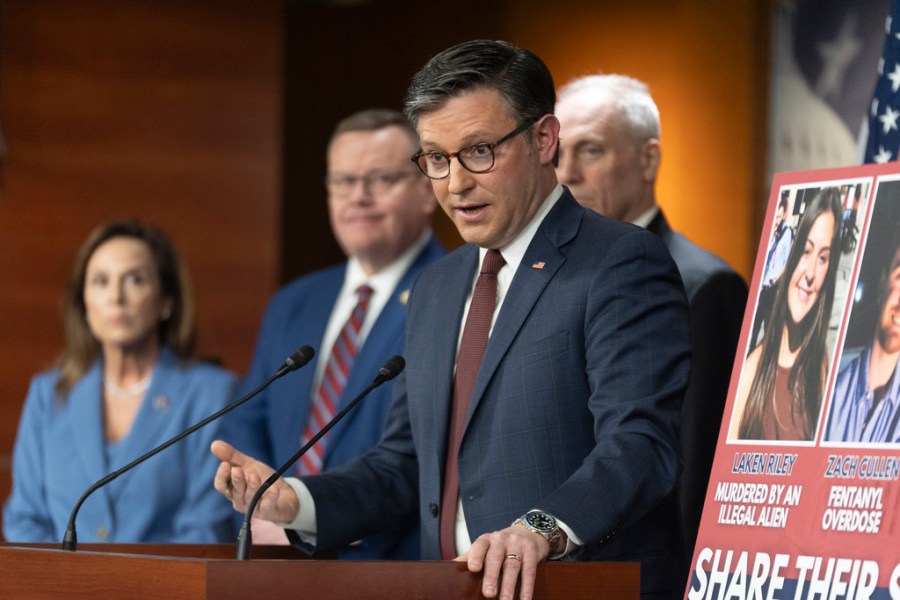
President Trump has called for “one big beautiful bill” for reconciliation — the budget process for changing existing laws on taxes, mandatory spending and the debt limit to bring the overall budget totals into line with a budget resolution’s total for a fiscal year.
While the president initially said it did not matter whether his budget wishes were packaged in one or two reconciliation bills, last Wednesday morning he expressed support for the House’s single-bill approach. In the afternoon, Vice President JD Vance came down on the side of the Senate’s two-bill approach, with energy and border provisions in one bill and the renewal of the president’s massive tax cuts in the second.
What difference does it make? Reconciliation is like any other multi-purpose “omnibus” bill processed by Congress except it is brought under “fast track” procedures in the Senate. That means only a majority vote is needed in the Senate to preclude the 60-vote majorities otherwise required to end filibusters.
It’s not often you see a linkage between aesthetics and legislating, but “one big beautiful bill” tweaks one’s curiosity as to what is beautiful about it and why you should care. For the president, the beauty is in the illusion, at least, of a fast-moving, one-stop approach that will be publicly pleasing and, perhaps, economically uplifting. Beauty is in the eye of the taxpayer.
President Trump’s preference for “one big beautiful bill” brings to mind the term, a “bright shiny object,” because it is a catchy, attention-grabbing device that has at least superficial appeal. As a master salesman, Trump knows you have to dangle a flashy lure up-front to hook potential buyers on your spiel and reel them in. In the president’s case, the extension of his $4 trillion in expiring tax cuts are his thing of beauty — more a crown-jewel atop his 100-day second term agenda than a mere shiny object.
The Senate finally wrapped up consideration on its budget resolution at 5:31 a.m. last Friday and then adopted the budget, 52 to 48. The House passed its budget resolution Tuesday evening on a down-to-the-wire, near party-line vote of 217 to 215.
Whereas the Senate had a free-wheeling, open debate and votes on nearly two dozen amendments (what the Senate calls a “vote-a-rama”), the House budget procedures from the Rules Committee allowed for no amendments, but plenty of arm-twisting during abrupt recesses.
Keep in mind, though, budget resolutions only contain “instructions” for the committees of jurisdiction to report their tax or mandatory spending bill reconciliation measures. The appropriations committees in both chambers then need to report and pass their 12 separate discretionary spending bills to complete the annual fiscal cycle.
The hard part will be getting the House and Senate committees on the same page for their respective reconciliation bills, then getting their chambers to agree on combining them into one or two omnibus bills. That process will involve heavy lifting and prolonged negotiations before consensus can be reached.
In the meantime, the big question staring Congress in the face is whether or how to keep the government running after March 14 when current continuing resolution funding expires. Even if Congress has agreed on a single budget resolution by then, that resolution does not fund anything. The budget resolution is simply Congress’s wish list until, whose skeletal frame will later be fleshed-in by statutory language (bills) that passes both chambers. Those bills, which will fund the government for fiscal 2026 (starting this Oct. 1), will need the president’s signature.
The funding measure needed to keep the government functioning in the interim will be either a further continuing appropriations resolution that runs through Sept. 30, or some other short-term, stop-gap measure that keeps things open pending final agreement on annual appropriations bills.
It seemed unlikely that House Speaker Mike Johnson (R-La.) would have sufficient Republicans on board to pass a budget resolution with deficit numbers unacceptable to hardline fiscal conservatives. It seemed clear from the outset that Democrats were not inclined this time to help bail the Speaker out, and they did not. Once again, Trump reportedly made the difference with a few strategically-placed phone calls.
Fiscal conundrums are nothing new in this age of bitter, intra- and inter-party differences. Bright, shiny wands are not in sufficient supply to induce the first branch to start pulling rabbits out of hats. Government shutdowns would only exacerbate an already topsy-turvy, turmoil-laden three-branch crisis. If you are holding out hope, hang-on tight: It could be a long and bumpy road ahead.
Don Wolfensberger is a 28-year congressional staff veteran culminating as chief-of-staff of the House Rules Committee in 1995. He is author of, “Congress and the People: Deliberative Democracy on Trial” (2000), and, “Changing Cultures in Congress: From Fair Play to Power Plays” (2018).












